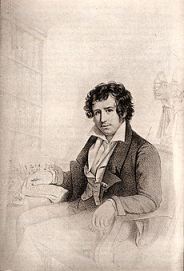A Community for Curious Minds who love History, its Odd Stories, and Good Reads
A Community for Curious Minds who love History, its Odd Stories, and Good Reads
By Holly Tucker
 At the height of the Battle of Alcañiz on May 23 1809, as he was about to give the order for a desperate charge by French troops into the center of the Spanish line, Col. P.F.M.A. Dejean happened to glance down. The air around him was thick with gunpowder and blood, but on a flower beside a stream, he saw something unusual. A beetle. Species unknown. He immediately dismounted, collected it, and pinned the specimen to the cork he had glued inside his helmet. Dejean was a count and a battle-tested leader in the Napoleonic armies; he would later become Napoleon’s first aide-de-camp. But he was also, above all, a coleopterist, a specialist in beetles. His men knew it because many of them carried glass vials for him and had orders to collect anything on six legs that crawled or flew. His enemies knew it, too, and out of courtesy and respect for the cause of scientific discovery, sent him back vials taken from the dead on the field of battle.
At the height of the Battle of Alcañiz on May 23 1809, as he was about to give the order for a desperate charge by French troops into the center of the Spanish line, Col. P.F.M.A. Dejean happened to glance down. The air around him was thick with gunpowder and blood, but on a flower beside a stream, he saw something unusual. A beetle. Species unknown. He immediately dismounted, collected it, and pinned the specimen to the cork he had glued inside his helmet. Dejean was a count and a battle-tested leader in the Napoleonic armies; he would later become Napoleon’s first aide-de-camp. But he was also, above all, a coleopterist, a specialist in beetles. His men knew it because many of them carried glass vials for him and had orders to collect anything on six legs that crawled or flew. His enemies knew it, too, and out of courtesy and respect for the cause of scientific discovery, sent him back vials taken from the dead on the field of battle.